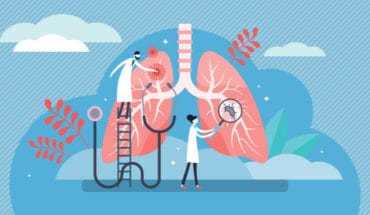Stroke in childhood and adolescence: outcome influenced by parental education and income: Children from educationally deprived, low-income families are much more likely to face long-term cognitive impairment following a stroke. Such is the main finding of a recent study conducted at MedUni Vienna’s Department of Pediatrics and Adolescent Medicine under the supervision of Lisa Bartha-Doering and Rainer Seidl.
With an incidence of between 2 and 5 cases per 100,000 children, stroke in childhood is a rare occurrence. Nonetheless, this still means that up to 75 children in Austria suffer a stroke every year. Nearly half of these are left with long-term neurological impairment following a stroke. Apart from physical and motor deficits, they are often left with impaired speech, attention span, working speed, perception and memory. The working group led by Lisa Bartha-Doering and Rainer Seidl has now shown that children from educationally deprived and low-income families are more likely to suffer long-term cognitive impairment following a stroke.
Says Lisa Bartha-Doering: “Not all children have an equal chance of growing up healthy. The correlation between socioeconomic background, which encompasses the social and economic circumstances of the children, and their health has been documented for many years now. The recognition that socioeconomic status affects the outcome following a neurological disease is therefore not new but it is important to keep reminding ourselves of it. However, what did surprise us was the extent to which the variation in the cognitive outcome for children following a stroke can be explained by their socioeconomic background.”
In fact, the study showed that nearly half of the differences in cognitive abilities were attributable to the children’s socioeconomic status. Rainer Seidl, Head of the neuropediatric out-patient clinic in Vienna General Hospital/MedUni Vienna explains: “The opportunity for early rehabilitation after the acute phase has improved over the last few years, due to the creation of children’s rehabilitation centres and children’s access to rehabilitation. However, the financial status of their families continues to influence access to important ongoing outpatient therapies, as well as their frequency and duration. Since therapists with statutory health insurance contracts often have long waiting lists, access to free physiotherapy, speech therapy and occupational therapy is limited in Austria. In rural regions, there is even less availability of free therapy places. Neurocognitive training is not funded at all by the health insurance fund in Austria. Higher-income parents therefore often finance the necessary treatment privately or pay for additional treatment sessions. Therefore, children from low-income families often cannot have the same number of treatment sessions as children of higher socioeconomic status.”
The researchers also point to the cognitive reserve of the child (i.e. their individual flexibility for reorganising cognitive processes in the brain) as another important factor. When researching the cognitive reserve, it is assumed that this is determined by the interplay of genetic and environmental factors: In healthy children, this reserve is closely linked to their intellectual achievements. The capacity for neuronal reorganisation and its influence upon specific cognitive abilities play a major role, particularly following a stroke in childhood. The authors suppose a third important reason for the outcome of the study, which is the higher incidence of childhood strokes among educationally deprived and low-income classes. Although stroke in childhood and adolescence is less influenced by the typical adult risk factors such as diabetes, atherosclerosis, hypertension or smoking, low socioeconomic status is a risk factor for the incidence of stroke in childhood and its course, due to associated greater susceptibility to infection, poor diet and inadequately treated metabolic diseases.
“Our study shows that more attention needs to be given to the treatment of children from educationally deprived, low-income families. Free access to treatment, including physiotherapy, speech therapy, occupational therapy and neurocognitive therapy should be available to all children who have suffered a stroke. Teachers and caregivers should also be made aware of this particularly vulnerable patient group of children of lower socioeconomic status, so that they can create a learning-friendly, supportive environment for them,” conclude the authors in summary.
Service: Developmental Medicine and Child Neurology
Bartha-Doering L, Gleiss A, Knaus S, Schmook MT, Seidl R. The influence of socioeconomic status on cognitive outcome after arterial ischemic stroke in childhood. Developmental Medicine and Child Neurology 2020. DOI: 10.1111/dmcn.14779.
- Breaking the ice for men’s mental health - 26th December 2025
- New bowel cancer test for early detection - 26th December 2025
- New method accelerates resistance testing in UTIs - 26th December 2025








The critical issue is whether strokes in children and the young have increased in incidence over the past 50 years. If they have, then studies need to look at the possible influence of the following changes in that period: vaccination, which has vastly increased in the past 20 years and become increasingly experimental. It was discovered a few years ago that the brain and immune system are physically connected via lymphatics. This was unknown and unimagined when vaccine theory and methodology were invented. Now that it is known that what is done to the immune system, would or could impact… Read more »